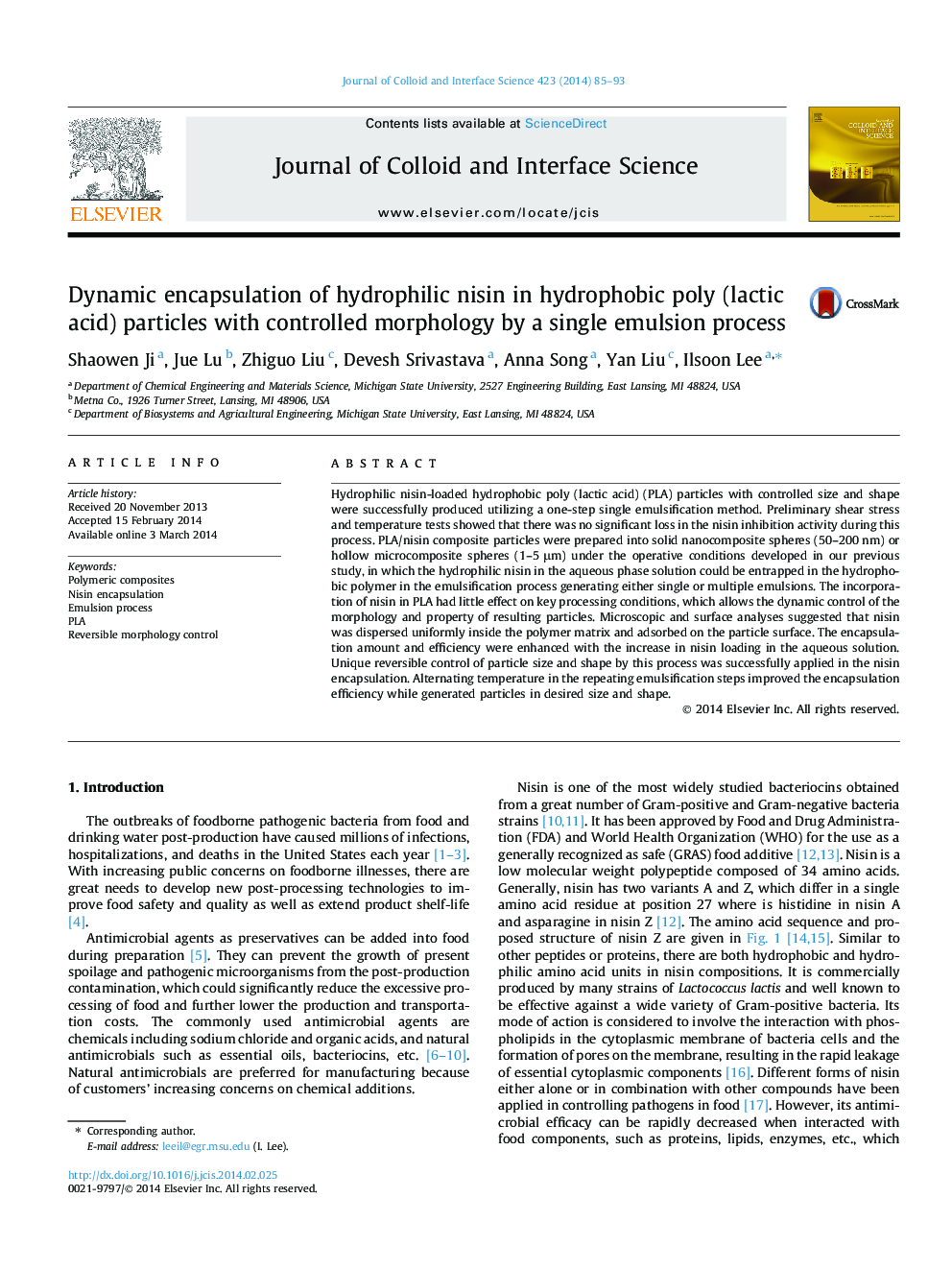| کد مقاله | کد نشریه | سال انتشار | مقاله انگلیسی | نسخه تمام متن |
|---|---|---|---|---|
| 607273 | 1454572 | 2014 | 9 صفحه PDF | دانلود رایگان |
• Hydrophilic model peptide (nisin) was successfully encapsulated into hydrophobic polymer.
• Poly (lactic acid) (PLA) hollow microcomposite spheres (1–5 μm) or solid nanocomposite (50–200 nm) spheres.
• A fast and efficient single emulsion process was applied to fabricate polymer composites.
• The prepared double emulsion-like droplets facilitate the incorporation of hydrophilic components.
• PLA/nisin hollow microcomposite or nanocomposite particles were fabricated by the manipulation of mixing fluid flow in a nanomixer.
Hydrophilic nisin-loaded hydrophobic poly (lactic acid) (PLA) particles with controlled size and shape were successfully produced utilizing a one-step single emulsification method. Preliminary shear stress and temperature tests showed that there was no significant loss in the nisin inhibition activity during this process. PLA/nisin composite particles were prepared into solid nanocomposite spheres (50–200 nm) or hollow microcomposite spheres (1–5 μm) under the operative conditions developed in our previous study, in which the hydrophilic nisin in the aqueous phase solution could be entrapped in the hydrophobic polymer in the emulsification process generating either single or multiple emulsions. The incorporation of nisin in PLA had little effect on key processing conditions, which allows the dynamic control of the morphology and property of resulting particles. Microscopic and surface analyses suggested that nisin was dispersed uniformly inside the polymer matrix and adsorbed on the particle surface. The encapsulation amount and efficiency were enhanced with the increase in nisin loading in the aqueous solution. Unique reversible control of particle size and shape by this process was successfully applied in the nisin encapsulation. Alternating temperature in the repeating emulsification steps improved the encapsulation efficiency while generated particles in desired size and shape.
Figure optionsDownload high-quality image (50 K)Download as PowerPoint slide
Journal: Journal of Colloid and Interface Science - Volume 423, 1 June 2014, Pages 85–93
